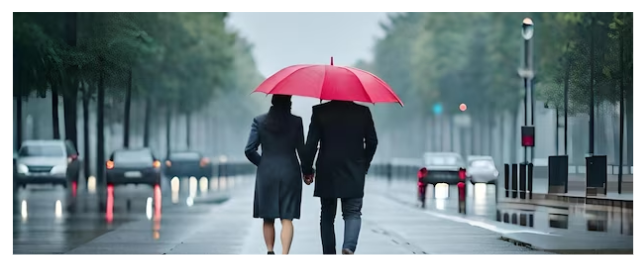Any interaction between two or more people is considered a social interaction. They all speak in specific ways or act in certain ways according to cultural norms. Every day, social interactions take place when we or others express ourselves to others through verbal or nonverbal cues. Human behavior is nevertheless greatly influenced by the weather, even on rainy days.
Rain psychologically discourages people from going outside. Rainy weather, for example, tends to reduce the number of people in parks and on the streets. There are fewer opportunities for spontaneous social contacts because of this decrease in foot traffic. However, when it rains, people frequently head inside to malls and cafes for cover and convenience. When more people gather in these areas to seek cover from the rain, social interactions may increase. A typical instance is the increased social activity that may be seen in supermarkets on rainy days, when visitors initiate informal chats while wandering the store.
Rainy weather has the potential to cause a variety of mood swings. Some people may have depressive or irritable sentiments as a result, which might make them less inclined to interact with others. For example, someone who is depressed because of cloudy skies might avoid social situations. According to a 2020 study, participants were more likely to express depressive symptoms when it was cloudy or overcast outside. But is it possible for rain to have a depressing effect? Not precisely. It would be more correct to state that seasonal depression and poor emotions can both be influenced by rain as seen in Seasonal Affective Disorder. On the other hand, some individuals find rain to be calming and may favor small, comfortable get-togethers that strengthen social ties. More personal social contacts can result from the need for comfort during cold weather conditions. For instance, having a movie night at someone’s house might help friends get closer in a laid-back setting.
Rainy weather has the potential to hinder nonverbal communication. Eye contact and other non-verbal clues that are crucial for effective interaction are diminished when people must handle umbrellas or get around puddles avoiding eye contact. As in-person connections decline, people may rely more on electronic communication to stay in touch. This change demonstrates a psychological adjustment made to preserve social ties in the face of physical obstacles. Friends may decide to use video calls rather than get together in person.
Attendance at open-air events, such markets or festivals, can be greatly impacted by rain. There are less social interactions when there is lower turnout. For instance, fewer people may visit an outdoor market on a wet day, which would restrict the typically lively social interactions. Rain can cause a big shift in the vibe at open events. For example, an outdoor concert may become more muted and less energetic, which will affect how people interact in that area.
Rain is viewed differently in different cultures, which can affect social interactions. Regardless of the weather, people may be more likely to participate in outdoor activities in cultures where rain is viewed as a good thing. Hindu customs state that a knot that gets wet is very difficult to untie. that way, if you “tie the knot” on a day when it rains, your marriage will presumably be equally difficult to untie. In contrast in African tribes, rainy seasons are interpreted as a portent of bad luck or as punishment from the gods. For example, rain may be seen as an ancestor’s displeasure if it interferes with significant occasions or rituals.
Rain has a major effect on our daily routines, emotional moods, and social relationships because of its distinct sensory experience. Psychologically speaking, rain can change our interactions with public areas and interpersonal communication.
About the Author


